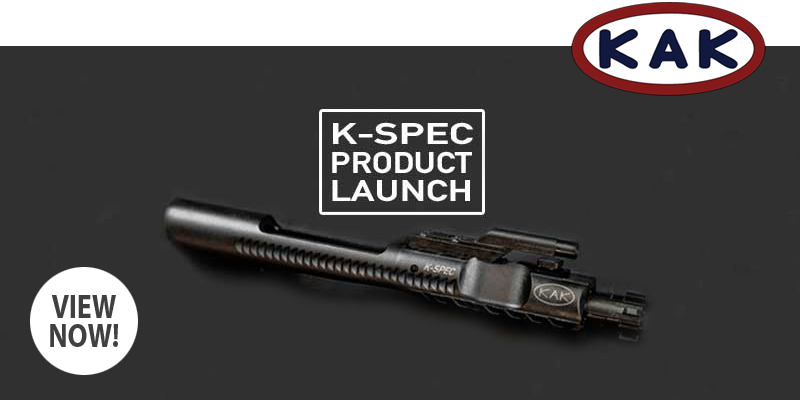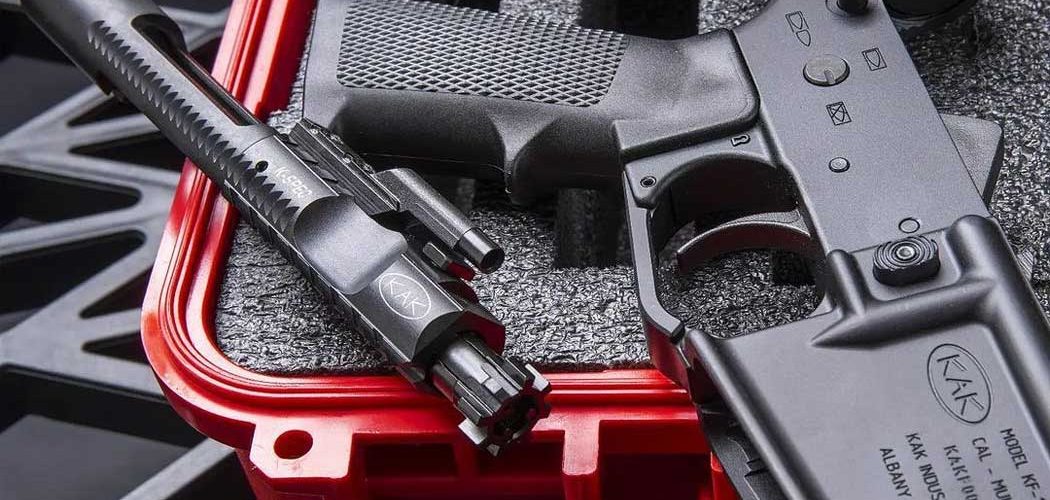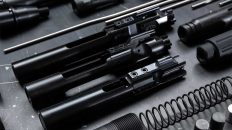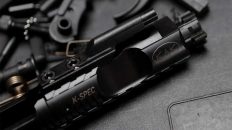Photo Credit: @down_range_photography
In the world of firearms, the bolt carrier group (BCG) plays a crucial role in the reliable functioning of semi-automatic and automatic rifles. Military organizations, such as the United States Department of Defense (DoD), have established specific standards called MILSPEC (Military Specifications) for various components, including the BCG. This article aims to provide a comprehensive understanding of what a MIL-SPEC BCG entails and why it is highly sought after in military and civilian shooting communities.
Many firearm manufacturers improve on the standard BCG design by adding modern/enhanced features. Such as KAK Industry’s newly innovated K-SPEC that has a few MIL-SPEC features, but with the gas vents relocated, dual ejectors, and sand cutter rails.
 Related: Enhance Firearm Performance with a High-Quality K-SPEC BCG
Related: Enhance Firearm Performance with a High-Quality K-SPEC BCG
Video: Watch our video below for a K-SPEC vs MIL-SPEC comparison.
1. The Significance of the BCG:
The BCG is responsible for chambering and extracting rounds, as well as cycling the firearm’s action. It consists of the bolt, carrier, gas key, firing pin, cam pin, and other related components. The reliability and durability of the BCG are crucial for ensuring consistent and safe operation of the firearm.
For a comprehensive understanding of what a bolt carrier group is and its importance, check out this detailed guide on what is a Bolt Carrier Group.
2. What is MILSPEC?
MILSPEC refers to a set of military specifications or standards that outline the requirements for various equipment and components used by the armed forces. These standards are established to ensure high-quality and reliable performance under demanding operational conditions.
3. Characteristics of a MIL-SPEC BCG:
– Material: MIL-SPEC BCGs are typically constructed from high-quality steel, providing strength and durability necessary for military applications. The materials used are often tested and selected to withstand extreme conditions.
– Coatings: MIL-SPEC BCGs often feature a corrosion-resistant coating, such as phosphate or nitride, to enhance longevity and protect against environmental factors.
– Dimensional and Functional Requirements: A MIL-SPEC BCG adheres to specific dimensional and functional specifications to ensure compatibility and interchangeability with other MILSPEC components. This allows for easy maintenance, repair, and component replacement in the field.
– Chrome Lining: Some MIL-SPEC BCGs may include chrome lining on the interior surfaces of the carrier and bolt. This provides enhanced durability, reduced friction, and facilitates easier cleaning.
– Testing: MIL-SPEC BCGs may undergo rigorous testing, including Magnetic Particle Inspection (MPI) and High-Pressure Testing (HPT), to identify potential defects and ensure they can withstand the forces generated during firing.
4. Military Applications and Civilian Popularity:
MILSPEC BCGs are primarily designed for military use, where reliability and performance under adverse conditions are critical. However, these BCGs have also gained popularity among civilian shooters who seek robust and dependable firearm components. The MILSPEC designation often serves as a mark of quality and endurance.
 Related: Enhance Firearm Performance with a High-Quality K-SPEC BCG
Related: Enhance Firearm Performance with a High-Quality K-SPEC BCG
Video: Watch our video below for a K-SPEC vs MIL-SPEC comparison.
The MIL-SPEC BCG is a vital component of military-grade firearms, designed to meet stringent standards set forth by military organizations like the DoD. Its construction, materials, coatings, and adherence to specific dimensions and functional requirements ensure the BCG’s durability, reliability, and compatibility with other MILSPEC components. While primarily intended for military use, MIL-SPEC BCGs have garnered interest from civilian shooters due to their reputation for outstanding performance and ruggedness.
Be sure to watch our YouTube video: A K-SPEC comparison to a MIL-SPEC BCG (Where’d all the gas go?)





Add comment